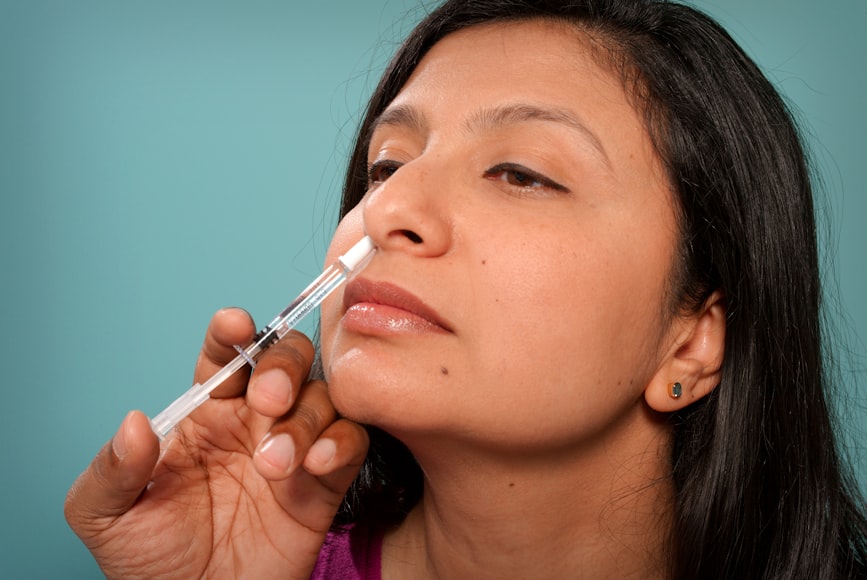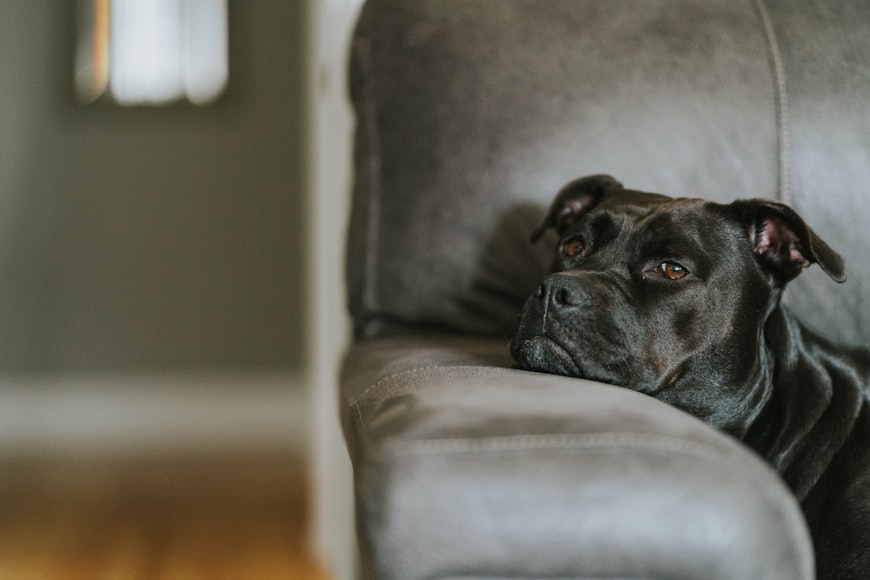Treating Seborrhea in Dogs: A Comprehensive Outline

Seborrhea is a common skin condition in dogs that causes excessive oil production. This can lead to a variety of symptoms, including dry, flaky skin, itching, and hair loss. Seborrhea can be caused by a variety of factors, including genetics, allergies, and hormonal imbalances.
Symptoms of Seborrhea in Dogs
The symptoms of seborrhea in dogs can vary depending on the severity of the condition. Some of the most common symptoms include:
- Dry, flaky skin
- Itching
- Hair loss
- Greasy skin
- Sores or crusts on the skin
- Unpleasant odor
Causes of Seborrhea in Dogs
The causes of seborrhea in dogs are not fully understood, but there are a number of factors that can contribute to the development of the condition. Some of the most common causes include:
- Genetics: Some breeds of dogs are more prone to developing seborrhea than others. Breeds that are commonly affected include:
- Cocker Spaniels
- West Highland White Terriers
- Shar-Peis
- Dachshunds
- Doberman Pinschers
-
Poodles
-
Allergies: Allergies to food, environmental allergens, or fleas can trigger seborrhea in some dogs.
-
Hormonal imbalances: Seborrhea can also be caused by hormonal imbalances, such as those that occur during pregnancy or Cushing’s disease.
-
Skin infections: Bacterial or yeast infections of the skin can also lead to seborrhea.
Treatment for Seborrhea in Dogs
The treatment for seborrhea in dogs will vary depending on the underlying cause of the condition. Treatment options may include:
-
Antibiotics or antifungals: If seborrhea is caused by a bacterial or yeast infection, antibiotics or antifungals may be prescribed.
-
Shampoos and conditioners: Medicated shampoos and conditioners can help to reduce inflammation and itching, and they can also help to remove excess oil from the skin.
-
Topical medications: Topical medications, such as corticosteroids or retinoids, can help to reduce inflammation and itching.
-
Oral medications: Oral medications, such as cyclosporine or isotretinoin, can be used to treat severe cases of seborrhea.
-
Dietary changes: If seborrhea is caused by a food allergy, dietary changes may be necessary.
Prognosis for Seborrhea in Dogs
The prognosis for seborrhea in dogs is generally good. With proper treatment, most dogs can achieve remission of their symptoms. However, some dogs may experience flare-ups from time to time.
Prevention of Seborrhea in Dogs
There is no sure way to prevent seborrhea in dogs, but there are a few things you can do to reduce your dog’s risk of developing the condition. These include:
-
Regular bathing: Bathing your dog regularly with a mild shampoo can help to remove excess oil from the skin.
-
Avoiding allergens: If your dog has allergies, avoiding exposure to allergens can help to reduce the risk of developing seborrhea.
-
Healthy diet: Feeding your dog a healthy diet can help to support a healthy skin and coat.
-
Regular veterinary checkups: Regular veterinary checkups can help to detect and treat skin problems early on.
Medical Diagnosis:

Introduction
Seborrhea is a common skin condition in dogs that causes excessive oil production and scaling. It can be caused by a variety of factors, including genetics, allergies, and hormonal imbalances. Seborrhea can be a frustrating condition for both dogs and their owners, but it can be managed with proper treatment.
Diagnosis
The first step in treating seborrhea is to diagnose the condition. Your veterinarian will perform a physical examination and may also recommend a skin scraping, skin cytology, or biopsy to confirm the diagnosis.
- Physical examination: Your veterinarian will look for signs of seborrhea, such as excessive oiliness, scaling, and inflammation.
- Skin scraping: This test involves scraping the surface of the skin to collect cells. These cells can be examined under a microscope to look for bacteria or other microorganisms that may be contributing to seborrhea.
- Skin cytology: This test involves collecting a sample of cells from the skin and staining them so that they can be examined under a microscope. This test can help to identify the type of seborrhea and any underlying causes.
- Biopsy: In some cases, your veterinarian may recommend a biopsy to collect a sample of skin tissue. This sample can be examined under a microscope to confirm the diagnosis of seborrhea and to rule out other skin conditions.
Treatment
The treatment for seborrhea will depend on the underlying cause. If the seborrhea is caused by an allergy, for example, your veterinarian will recommend avoiding the allergen and treating any associated symptoms. In other cases, treatment may include:
- Topical medications: Topical medications can help to reduce inflammation and scaling. These medications may include shampoos, conditioners, and ointments.
- Oral medications: Oral medications can help to control seborrhea in some cases. These medications may include antibiotics, anti-inflammatories, and hormones.
- Diet: A healthy diet can help to support the skin and reduce seborrhea. Your veterinarian may recommend a diet that is high in omega-3 fatty acids and low in carbohydrates.
- Grooming: Regular grooming can help to remove excess oil and scaling from the skin. Your veterinarian may recommend bathing your dog with a medicated shampoo and using a brush to remove loose hair and dander.
Prognosis
The prognosis for seborrhea is generally good. With proper treatment, most dogs can experience significant improvement in their symptoms. However, seborrhea can be a chronic condition, and it may require ongoing treatment to prevent flare-ups.
Prevention
There is no sure way to prevent seborrhea, but there are some things you can do to reduce your dog’s risk of developing this condition. These include:
- Keeping your dog’s skin clean and healthy by bathing him or her regularly.
- Avoiding exposure to allergens.
- Feeding your dog a healthy diet.
- Taking your dog to the veterinarian for regular checkups.
Conclusion
Seborrhea is a common skin condition in dogs, but it can be managed with proper treatment. By following your veterinarian’s recommendations, you can help your dog to experience relief from the symptoms of seborrhea and live a happy, healthy life.
Dietary Management:

Seborrhea is a common skin condition in dogs that is characterized by excessive production of sebum, the natural oils that help keep the skin and coat healthy. This overproduction can lead to a variety of symptoms, including:
- Oily skin and coat
- Itching and scratching
- Redness and inflammation
- Crusty or scaly patches
- Foul odor
While there is no cure for seborrhea, it can be managed with a combination of treatments, including dietary changes.
Dietary Management for Seborrhea in Dogs
A healthy diet is crucial for managing seborrhea in dogs. The following dietary recommendations can help to reduce sebum production and improve skin health:
1. High-Quality Diet with Omega-3 Fatty Acids
Feeding your dog a high-quality diet that is rich in omega-3 fatty acids is essential for supporting overall skin health. Omega-3s have anti-inflammatory properties that can help to reduce redness and inflammation associated with seborrhea. They also help to improve the skin’s moisture barrier and reduce itching. Good sources of omega-3 fatty acids for dogs include:
- Salmon
- Tuna
- Mackerel
- Sardines
- Flaxseed oil
2. Limited Carbohydrates and Fats
Seborrhea can be exacerbated by high levels of carbohydrates and fats in the diet. These ingredients can contribute to inflammation and overproduction of sebum. Therefore, it is important to limit the amount of carbohydrates and fats in your dog’s diet, especially if they are prone to seborrhea.
3. Avoid Common Allergens
Some dogs with seborrhea may be allergic to certain ingredients in their diet. Common allergens include:
- Beef
- Chicken
- Eggs
- Dairy products
- Wheat
- Corn
If you suspect that your dog may be allergic to a particular ingredient, eliminate it from their diet for several weeks to see if their seborrhea symptoms improve.
4. Consider a Prescription Diet
In some cases, a prescription diet may be necessary to manage seborrhea in dogs. Prescription diets are formulated with specific ingredients that are designed to support skin health and reduce inflammation. Your veterinarian can recommend the best prescription diet for your dog’s individual needs.
5. Other Dietary Considerations
In addition to the above recommendations, there are a few other dietary considerations that may be helpful for managing seborrhea in dogs:
- Feed your dog smaller meals more frequently throughout the day instead of one large meal.
- Avoid feeding your dog treats that are high in carbohydrates or fats.
- Make sure your dog has access to plenty of fresh water at all times.
Monitoring and Adjustments
Dietary management for seborrhea in dogs is an ongoing process. It is important to monitor your dog’s skin closely and make adjustments to their diet as needed. If your dog’s symptoms do not improve after several weeks of dietary changes, consult with your veterinarian to rule out other underlying causes of seborrhea.
Shampoo Therapy:

Seborrhea is a common skin condition in dogs that can cause excessive production of sebum, the oily substance that lubricates the skin and hair. This overproduction can lead to a range of skin problems, including itching, redness, dandruff, and hair loss.
While there is no cure for seborrhea, it can be managed with a combination of treatments, including shampoo therapy. Medicated shampoos can help to reduce sebum production, control skin inflammation, and kill bacteria and fungi that can worsen the condition.
Types of Medicated Shampoos for Seborrhea
Several types of medicated shampoos are effective in treating seborrhea in dogs. These shampoos typically contain one or more of the following ingredients:
- Ketoconazole: An antifungal agent that helps to control the growth of Malassezia, a yeast that can contribute to seborrhea.
- Chlorhexidine: An antiseptic and antibacterial agent that kills bacteria that can cause skin infections.
- Benzoyl peroxide: An antibacterial and exfoliating agent that helps to unclog pores and remove excess sebum.
Frequency of Bathing
The frequency of bathing dogs with seborrhea will vary depending on the severity of the condition and the specific shampoo being used. Most medicated shampoos are recommended for use once or twice per week. However, more frequent bathing may be necessary for dogs with severe seborrhea or skin infections.
How to Bathe a Dog with Seborrhea
To bathe a dog with seborrhea, follow these steps:
- Wet the dog thoroughly with lukewarm water. Do not use hot water, as this can irritate the skin.
- Apply the medicated shampoo to the dog’s coat and massage it in. Be sure to work the shampoo all the way down to the skin.
- Allow the shampoo to sit for 5-10 minutes. This will give the shampoo time to work.
- Rinse the dog thoroughly with lukewarm water. Be sure to remove all of the shampoo residue.
- Towel dry the dog. Do not rub the dog’s skin, as this can irritate it.
Additional Tips
In addition to shampoo therapy, there are a number of other things that can be done to help manage seborrhea in dogs, including:
- Dietary changes: A diet rich in omega-3 fatty acids can help to improve skin health. Avoid foods that are high in carbohydrates and grains, as these can worsen seborrhea.
- Regular brushing: Brushing your dog’s coat regularly can help to remove excess sebum and dead skin cells.
- Avoid stress: Stress can worsen seborrhea in some dogs. Try to minimize stressors in your dog’s life, such as loud noises, changes in routine, and overcrowding.
- Consult a veterinarian: If your dog’s seborrhea is severe or does not respond to home treatment, consult a veterinarian for further care. Your veterinarian may recommend prescription medications or other treatments.
By following these tips, you can help to manage seborrhea in your dog and keep his skin healthy and comfortable.
Topical Treatments:

Seborrhea, a common skin disorder in dogs, manifests as excessive oiliness and scaling on the skin. This condition can be caused by a variety of factors, including genetics, hormonal imbalances, and underlying medical problems. Treatment typically involves addressing the underlying cause and implementing topical measures to alleviate symptoms.
Understanding the Role of Topical Treatments
Topical treatments play a crucial role in managing seborrhea by addressing the visible symptoms on the skin’s surface. They aim to reduce inflammation, control infections, moisturize the skin, and promote healing. Various topical options are available for dogs with seborrhea, each with its unique benefits and drawbacks.
1. Ketoconazole Cream or Spray
Ketoconazole is an antifungal medication that effectively treats Malassezia, a type of yeast that can contribute to seborrhea in dogs. Applied topically as a cream or spray, ketoconazole inhibits the growth of Malassezia, reducing inflammation and scaling. It is generally well-tolerated, but side effects such as skin irritation or dryness may occur.
2. Antibacterial or Antifungal Ointments
Bacterial and fungal infections can exacerbate seborrhea in dogs. Topical ointments containing antibiotics (e.g., neomycin, gentamicin) or antifungals (e.g., clotrimazole, miconazole) can combat these infections, reducing inflammation and promoting skin repair. It is important to use these ointments as prescribed by a veterinarian to avoid potential side effects.
3. Emollients to Moisturize the Skin
Seborrhea can lead to dry, flaky skin that requires additional moisture. Emollients, such as moisturizers or leave-in conditioners, provide hydration and protect the skin’s barrier. Choosing emollients specifically formulated for dogs is crucial, as human products may contain ingredients that are harmful to pets.
Other Topical Considerations
In addition to the aforementioned topical treatments, several other topical measures may benefit dogs with seborrhea:
- Medicated shampoos and conditioners: Specially formulated shampoos and conditioners containing medicated ingredients (e.g., benzoyl peroxide, salicylic acid) can help remove excess oils and reduce inflammation.
- Protective dressings: In cases of severe seborrhea, protective dressings may be used to cover open wounds or prevent further skin damage.
- Hydrotherapy: Bathing the dog in warm water with Epsom salts or oatmeal can soothe irritated skin and reduce itching.
When to Seek Veterinary Care
While topical treatments can effectively alleviate the symptoms of seborrhea, it is essential to consult with a veterinarian to determine the underlying cause and develop a comprehensive treatment plan. If you notice any signs of seborrhea in your dog, such as excessive oiliness, scaling, or itching, schedule an appointment for an examination and diagnosis.
Conclusion
Topical treatments play a significant role in managing seborrhea in dogs by reducing inflammation, controlling infections, and moisturizing the skin. Ketoconazole cream or spray, antibacterial or antifungal ointments, and emollients are commonly used to address the visible symptoms of this condition. While topical treatments can provide relief, consulting with a veterinarian is crucial to determine the underlying cause and develop an effective treatment plan that addresses the root of the problem.
Oral Medications:
Seborrhea, a common skin condition in dogs, is characterized by an overproduction of sebum, the skin’s natural oil. This excess oiliness can lead to various symptoms, including greasy skin, scaling, itching, and odor. Understanding the causes and effective treatment options is crucial for providing optimal care for affected dogs.
Causes of Seborrhea in Dogs
Seborrhea can result from several underlying factors, including:
- Hormonal imbalances: Hypothyroidism, a condition where the thyroid gland does not produce enough thyroid hormones, is a common cause of seborrhea.
- Nutritional deficiencies: Dogs may develop seborrhea if they do not receive a balanced diet deficient in essential fatty acids or other nutrients.
- Allergic reactions: Food, environmental, or contact allergies can trigger skin inflammation and seborrhea.
- Parasitic infections: Mites, such as Demodex and Sarcoptes, can lead to secondary seborrhea.
- Autoimmune disorders: Conditions like systemic lupus erythematosus (SLE) can affect the skin and cause seborrhea.
- Idiopathic: In some cases, the cause of seborrhea remains unknown.
Diagnostic Approach
Diagnosing seborrhea involves a thorough physical examination, medical history, and laboratory testing. Your veterinarian may perform the following:
- Skin scraping: This helps detect mites or other skin parasites.
- Cytology: Microscopic examination of skin cells reveals the presence of excessive sebum.
- Skin biopsy: A small piece of skin is taken for examination under a microscope.
- Blood tests: These can detect underlying health conditions, such as hypothyroidism.
Treatment Options for Seborrhea
Treatment for seborrhea focuses on addressing the underlying cause and controlling the symptoms. Common treatment options include:
- Medicated Shampoos and Lotions:
Anti-seborrheic shampoos and lotions containing ingredients like benzoyl peroxide, chlorhexidine, or ketoconazole help reduce excess sebum production, kill bacteria, and soothe inflammation.
- Topical Antibiotics and Antifungals:
If secondary bacterial or yeast infections are present, topical antibiotics or antifungals may be prescribed to eliminate them.
- Systemic Medications:
Oral Antibiotics: For severe bacterial infections, oral antibiotics like erythromycin or cephalexin may be necessary.
Retinoids: These medications, such as isotretinoin, help reduce oil production by regulating the activity of sebaceous glands.
Antiseborrheic Drugs: Itraconazole is an oral medication that has anti-seborrheic effects and helps control excessive oil production.
- Dietary Modifications:
Dogs with seborrhea may benefit from a diet rich in essential fatty acids, such as omega-3 and omega-6 fatty acids. Avoiding foods that trigger allergies is also crucial.
- Hypoallergenic Environment:
Minimizing exposure to allergens, such as dust mites, pollen, and certain fabrics, can help reduce skin irritation and seborrhea.
- Regular Grooming:
Frequent bathing with medicated shampoos and brushing helps remove excess sebum and dirt from the skin.
Prognosis and Prevention
The prognosis for dogs with seborrhea depends on the underlying cause and the severity of the condition. With proper treatment and management, most dogs can live comfortable and healthy lives.
Prevention of seborrhea involves:
- Maintaining a balanced diet and providing essential nutrients.
- Controlling underlying medical conditions, such as hypothyroidism.
- Identifying and avoiding allergens.
- Providing a clean and hypoallergenic environment.
- Regular veterinary checkups and diagnostic tests to detect and address skin problems early on.
Conclusion
Seborrhea in dogs is a manageable condition that requires patience and consistent treatment. By understanding the causes, diagnostic approaches, and effective treatment options, pet owners and veterinarians can work together to improve the skin health and well-being of their canine companions.
Environmental Control:
Seborrhea is a common skin condition in dogs characterized by excessive production of sebum, the oily substance that keeps the skin and coat healthy. While there are various causes of seborrhea in dogs, environmental factors can often play a significant role. This article will explore how to treat seborrhea in dogs by controlling environmental stressors.
Reduce Stress in Dogs
Stress can trigger seborrhea in dogs by causing hormonal imbalances and suppressing the immune system. To reduce stress in your dog, consider the following:
- Provide a safe and comfortable environment: Ensure your dog has a quiet place to rest, away from noise and other stressors.
- Establish a regular routine: Predictability and routine can help dogs feel secure and reduce anxiety.
- Offer mental stimulation: Provide your dog with interactive toys, puzzles, and training to keep them mentally engaged and prevent boredom.
- Consider pheromone diffusers: Pheromones are natural chemicals that can help dogs feel calm and relaxed.
- Consult a veterinary behaviorist: If stress is a significant issue for your dog, consult a certified veterinary behaviorist for professional guidance and support.
Manage Allergies and Environmental Irritants
Allergies and environmental irritants, such as dust, pollen, and certain cleaning products, can worsen seborrhea in dogs. To manage these triggers effectively:
- Identify allergies: Perform allergy testing to determine what substances are causing your dog’s allergic reactions.
- Avoid allergens: Once the allergens are identified, take steps to minimize your dog’s exposure to them. This may involve using hypoallergenic bedding, avoiding certain outdoor areas, or using air purifiers.
- Use specific shampoos: Medicated shampoos containing antihistamines or oatmeal can help soothe and reduce itching caused by allergies.
- Clean the environment regularly: Vacuum and clean surfaces frequently to remove allergens and irritants.
- Limit contact with irritants: Keep your dog away from harsh chemicals and detergents, and avoid using strong perfumes or air fresheners in their presence.
Additional Environmental Control Measures
In addition to reducing stress and managing allergies, the following environmental control measures can help support your dog’s skin health:
- Maintain a balanced diet: A healthy diet rich in omega-3 fatty acids can help reduce inflammation and improve skin barrier function.
- Provide adequate exercise: Regular exercise helps relieve stress and promotes overall well-being.
- Ensure proper grooming: Brush your dog regularly to remove loose hair and debris. Bathing twice a month with a gentle dog shampoo can help remove excess sebum and dirt. Avoid over-bathing, as it can further strip the skin of its natural oils.
- Consider humidifiers: Dry air can worsen seborrhea by dehydrating the skin. Using a humidifier can help add moisture to the air and soothe irritated skin.
Collaboration with Your Veterinarian
It’s important to consult with your veterinarian before implementing any treatment plan. Your veterinarian can accurately diagnose the cause of your dog’s seborrhea and recommend the most appropriate course of action. They may prescribe medications, special diets, or other treatments to address the underlying medical conditions.
By implementing effective environmental control measures, you can reduce stress, manage allergies, and minimize irritants, which can significantly improve the symptoms of seborrhea in your dog. Remember to work closely with your veterinarian for personalized guidance and support throughout the treatment process.
Supplements:
Seborrhea, a common skin condition in dogs, arises when the sebaceous glands produce excessive amounts of sebum, leading to a range of symptoms. While the underlying causes can vary, understanding the condition and exploring treatment options is crucial for alleviating the discomfort and restoring the skin’s health.
Symptoms and Diagnosis
Seborrhea typically manifests as two main clinical presentations:
-
Seborrhea sicca (or dry seborrhea): Characterized by dry, flaky skin, dull coat, and itching.
-
Seborrhea oleosa (or oily seborrhea): Exhibiting greasy, oily skin, foul odor, and hair loss.
Diagnosis involves a thorough examination by a veterinarian, including the dog’s medical history, physical examination, and skin samples. Microscopic analysis of skin cells can confirm the diagnosis of seborrhea.
Treatment Options
Managing seborrhea requires a multifaceted approach, addressing both the underlying causes and alleviating the skin symptoms.
1. Topical Therapy:
-
Antibacterial shampoos: Medicated shampoos containing antibacterial agents help reduce bacterial infections that often accompany seborrhea.
-
Anti-inflammatory shampoos: These shampoos soothe skin irritation and reduce inflammation.
-
Emollients: Emollient lotions or sprays moisturize the skin and create a protective barrier.
2. Systemic Therapy:
3. Dietary Modifications:
-
Hypoallergenic diet: Identifying and eliminating allergens from the dog’s diet can improve skin health.
-
Omega-3 fatty acid supplements: Fish oil and other sources of omega-3 fatty acids possess anti-inflammatory properties.
-
Probiotics: Probiotics support a healthy gut microbiome, which is linked to immune function and skin health.
4. Other Treatments:
-
Shampoo therapy: Regular bathing with medicated or emollient shampoos helps cleanse the skin and reduce symptoms.
-
Light therapy: Some studies suggest that light therapy can improve seborrhea by reducing inflammation and promoting skin healing.
-
Immunotherapy: For cases with an underlying immune disorder, immunotherapy may help modulate the immune response.
Supplements for Seborrhea
In addition to the primary treatment options, supplements can play a supportive role in managing seborrhea in dogs:
-
Essential fatty acids (e.g., fish oil) provide anti-inflammatory benefits and improve skin health.
-
Probiotics support a balanced gut microbiome, which can enhance skin immunity and reduce inflammation.
Conclusion
Seborrhea is a manageable condition in dogs, although its treatment requires a comprehensive approach. By addressing the underlying causes and employing appropriate topical, systemic, dietary, and supportive measures, pet owners can effectively alleviate symptoms, restore skin health, and improve their dog’s quality of life. Regular consultation with a veterinarian is crucial for monitoring progress and adjusting treatment as needed.
Professional Grooming:
Seborrhea is a common skin condition in dogs that causes excessive dryness or greasiness of the skin and coat. It can be caused by a variety of factors, including hormonal imbalances, allergies, and infections. While there is no cure for seborrhea, it can be managed with proper treatment, including professional grooming.
Professional Grooming for Dogs with Seborrhea
Professional grooming is an essential part of managing seborrhea in dogs. Regular brushing and stripping or hand removal of hair can help to remove excess oils and skin debris, reducing the symptoms of the condition.
Regular Brushing
Brushing your dog’s coat regularly is one of the most important things you can do to manage seborrhea. Brushing helps to remove dead skin cells, dirt, and excess oils from the coat, which can help to reduce irritation and itching. It also promotes the production of natural oils, which can help to moisturize the skin and coat.
Stripping or Hand Removal of Hair
In severe cases of seborrhea, your veterinarian may recommend stripping or hand removal of the hair. This is a process where the loose and dead hair is removed from the coat, leaving behind only the healthy hair. Stripping or hand removal of the hair can help to improve ventilation and reduce the accumulation of oils and debris on the skin.
Additional Tips for Managing Seborrhea in Dogs
In addition to professional grooming, there are a number of other things you can do to help manage seborrhea in your dog. These include:
- Bathing: Bathing your dog regularly with a gentle shampoo can help to remove excess oils and debris from the skin and coat. However, it is important to avoid over-bathing, as this can dry out the skin and worsen the symptoms of seborrhea.
- Moisturizing: Moisturizing your dog’s skin and coat can help to reduce dryness and itching. There are a variety of pet-friendly moisturizers available, including sprays, lotions, and oils.
- Diet: A healthy diet can help to improve the overall health of your dog’s skin and coat. A diet that is rich in omega-3 fatty acids can help to reduce inflammation and moisturize the skin.
- Medication: In some cases, your veterinarian may prescribe medication to help manage seborrhea in your dog. These medications may include antibiotics to treat infections, or antifungals to treat yeast infections.
Conclusion
Seborrhea is a common skin condition in dogs that can cause a variety of symptoms, including excessive dryness or greasiness of the skin and coat, itching, and irritation. While there is no cure for seborrhea, it can be managed with proper treatment, including professional grooming, bathing, moisturizing, and medication. By following the tips in this article, you can help to improve the comfort and quality of life for your dog with seborrhea.
Monitoring and Reassessment:
Seborrhea is a common skin condition in dogs that results in an excessive production of sebum, the oily substance that lubricates the skin and hair. This overproduction can lead to a variety of symptoms, including dandruff, greasy skin, and a foul odor.
While there is no cure for seborrhea, it can be managed with a combination of treatments. One important aspect of managing seborrhea is regular monitoring and reassessment.
Monitoring Progress
After starting treatment for seborrhea, it is important to monitor your dog’s progress closely. This will help you to ensure that the treatment is effective and that your dog is responding well.
Some of the things to watch for when monitoring your dog’s progress include:
- Dandruff: Does your dog still have dandruff? If so, how much?
- Greasy skin: Is your dog’s skin still greasy? If so, how greasy is it?
- Odor: Does your dog still have a foul odor? If so, how strong is the odor?
- Other symptoms: Are there any other symptoms of seborrhea that your dog is experiencing?
If you notice that your dog’s symptoms are not improving or are getting worse, it is important to contact your veterinarian. They may need to adjust your dog’s treatment plan.
Reassessment
In addition to monitoring your dog’s progress, it is also important to have them reassessed by their veterinarian on a regular basis. This will help to ensure that the treatment is still effective and that your dog is not experiencing any adverse side effects.
Your veterinarian will typically reassess your dog every 2-4 weeks. At each appointment, they will examine your dog’s skin and coat, and they may also perform some tests to check for any underlying medical conditions.
If your veterinarian determines that your dog’s seborrhea is not improving, they may need to adjust your dog’s treatment plan. This may involve changing the type of medication your dog is taking, the frequency of their treatments, or both.
Importance of Monitoring and Reassessment
Monitoring and reassessment are essential for managing seborrhea in dogs. By closely monitoring your dog’s progress and having them reassessed by their veterinarian on a regular basis, you can help to ensure that they are receiving the best possible care and that their condition is being managed effectively.
Conclusion
Seborrhea is a common skin condition in dogs that can be managed with a combination of treatments. One important aspect of managing seborrhea is regular monitoring and reassessment. By closely monitoring your dog’s progress and having them reassessed by their veterinarian on a regular basis, you can help to ensure that they are receiving the best possible care and that their condition is being managed effectively.

























